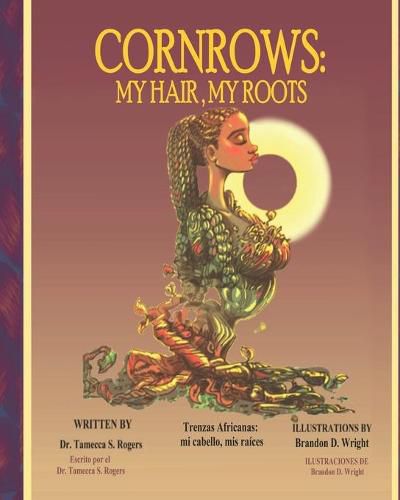Readings Newsletter
Become a Readings Member to make your shopping experience even easier.
Sign in or sign up for free!
You’re not far away from qualifying for FREE standard shipping within Australia
You’ve qualified for FREE standard shipping within Australia
The cart is loading…






Have you ever wondered where cornrows and locs come from? Why there are different braids? What they mean? And why Black women rock these hairstyles around the world?Hair can represent your identity, roots, culture, and freedom. If you’re comfortable in your skin today, be bold and wear your cornrows with your head held high.?Alguna vez te has preguntado de donde vienen las trenzas africanas y las rastas? ?Por que hay diferentes trenzas? ?Que significan? ?Y por que las mujeres negras llevan estos peinados en todo el mundo?Sigue leyendo para descubrir como estas trenzas, retorcimientos y enredados son mucho mas que un simple peinado. En el cabello entrelazado esta la historia, la cultura, la supervivencia y la belleza que a menudo se ha transmitido de generacion en generacion.Las trenzas africanas prevalecian en la cultura africana mucho antes de la trata de esclavos, pero es esta epoca la que las trajo a los Estados Unidos. Si bien las trenzas africanas no siempre han sido aceptadas en America, hoy en dia se ven como una expresion del amor propio y la autoaceptacion de los negros, e incluso se estan haciendo populares en la pantalla grande y en la chica.El cabello puede representar tu identidad, raices, cultura y libertad. Si el dia de hoy te sientes a gusto en tu piel, se audaz y lleva tus trenzas africanas con la frente en alto.Read on to find out how these braids, twisting, and matting are far more than just a hairstyle. In the intertwining hair is history, culture, survival, and beauty that has often been handed down from generation to generation.Cornrows were prevalent in African culture well before the slave trade, but it is this era that brought it to the United States. While cornrows have not always been accepted in America, today they are seen as an expression of Black self-love and self-acceptance and even becoming popular on the big and small screen.
$9.00 standard shipping within Australia
FREE standard shipping within Australia for orders over $100.00
Express & International shipping calculated at checkout
Have you ever wondered where cornrows and locs come from? Why there are different braids? What they mean? And why Black women rock these hairstyles around the world?Hair can represent your identity, roots, culture, and freedom. If you’re comfortable in your skin today, be bold and wear your cornrows with your head held high.?Alguna vez te has preguntado de donde vienen las trenzas africanas y las rastas? ?Por que hay diferentes trenzas? ?Que significan? ?Y por que las mujeres negras llevan estos peinados en todo el mundo?Sigue leyendo para descubrir como estas trenzas, retorcimientos y enredados son mucho mas que un simple peinado. En el cabello entrelazado esta la historia, la cultura, la supervivencia y la belleza que a menudo se ha transmitido de generacion en generacion.Las trenzas africanas prevalecian en la cultura africana mucho antes de la trata de esclavos, pero es esta epoca la que las trajo a los Estados Unidos. Si bien las trenzas africanas no siempre han sido aceptadas en America, hoy en dia se ven como una expresion del amor propio y la autoaceptacion de los negros, e incluso se estan haciendo populares en la pantalla grande y en la chica.El cabello puede representar tu identidad, raices, cultura y libertad. Si el dia de hoy te sientes a gusto en tu piel, se audaz y lleva tus trenzas africanas con la frente en alto.Read on to find out how these braids, twisting, and matting are far more than just a hairstyle. In the intertwining hair is history, culture, survival, and beauty that has often been handed down from generation to generation.Cornrows were prevalent in African culture well before the slave trade, but it is this era that brought it to the United States. While cornrows have not always been accepted in America, today they are seen as an expression of Black self-love and self-acceptance and even becoming popular on the big and small screen.